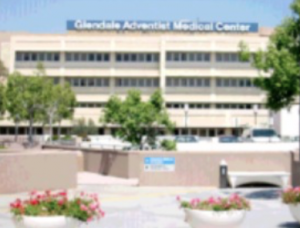 Project Type: Commercial — Medical Facility – Pipe Restoration
Project Type: Commercial — Medical Facility – Pipe Restoration
Location: Glendale, CA
Description: The Glendale Adventist Medical Center was experiencing pipe corrosion in the piping system in the Outpatient and Administrative Building’s chilled water and heating system. The Glendale Adventist Medical Center piping system was isolated and conventional repairs were carried out then the piping system was restored in-place using the ACE DuraFlo® system of in-place pipe restoration. By restoring the piping system, in-place, the facility was able to remain in full operation, there were no scheduling changes to outpatient services and the restoration work was completed without activating the concerns related to asbestos abatement.
THE PROBLEM:
The Glendale Adventist Medical Center is a 450 bed medical facility that was originally built in 1905 and has continually undergone expansion and upgrading to its present form. The Outpatient and Administrative facility was built in 1955.
The problem was related to pipe corrosion in the piping system in the Outpatient and Administrative Building’s chilled water and heating system. The heating system had an operating temperature of about 180° F. The type schedule 40 black pipe mains and branch lines ranged in size from half-inch to 2Â1?2 inch were encrusted and in some cases had corroded to complete failure with through the wall pinhole leaks. Pipe replacement was fraught with the task of trying to work around out patient scheduling and the shut down of administrative services for the hospital. To compound the problem the existing piping system was encased in asbestos insulation. Abatement would have meant a full shut down of the facility.
THE SOLUTION:
ACE DuraFlo® in-place pipe restoration. The Glendale Adventist Medical Center piping system was isolated and conventional repairs were carried out then the piping system was restored in-place using the ACE DuraFlo® system of in- place pipe restoration. By restoring the piping system, in-place, the facility was able to remain in full operation, there were no scheduling changes to outpatient services and the restoration work was completed without activating the concerns related to asbestos abatement.
